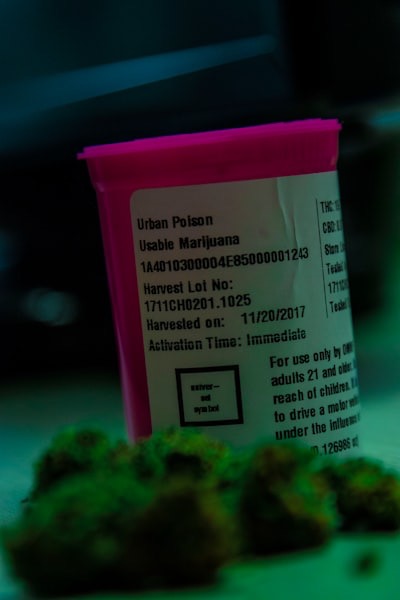Effective Drug Crime Prevention Strategies
Drug Crime Prevention Strategies and Initiatives

Key Highlights
- Operation Engage is a comprehensive community-level approach by the U.S. Drug Enforcement Administration (DEA) that focuses on bridging public health and public safety to address the drug epidemic through prevention strategies and collaboration with local partners.
- Drug-related crimes have a significant impact on society, affecting public health and public safety.
- Socioeconomic factors play a crucial role in the dynamics of drug crimes, highlighting the importance of addressing underlying issues to prevent drug abuse.
- Community-based initiatives are effective strategies for tackling drug abuse, involving local communities in prevention efforts.
- Enhancing law enforcement techniques and collaboration is crucial for preventing drug crimes and ensuring public safety.
- Education is a key component in preventing drug crimes, emphasizing the need for drug awareness programs in schools and training educators to recognize and respond to signs of drug use.
- International cooperation is essential in combating drug trafficking, and successful cross-border anti-drug operations and the involvement of international organizations play a significant role in drug crime prevention.
- Technological advancements, such as data analytics and innovations in drug detection, are valuable tools in drug crime prevention.
- Rehabilitation and reintegration programs are vital in addressing drug crimes, focusing on helping individuals recover from substance abuse and reintegrate into society.
- Policy and legislation play a crucial role in drug crime prevention, requiring analysis of current drug laws and proposals for legal reforms to effectively address the issue.
Introduction

Drug crime is a global issue that poses significant challenges to public health and public safety. Illicit drug use and drug-related crimes have far-reaching consequences, affecting individuals, families, communities, and society as a whole. In response to this problem, various strategies and initiatives have been developed to prevent drug crimes and address the underlying causes of drug abuse, including the trafficking and misuse of opioids.
One notable initiative is Operation Engage, launched by the U.S. Drug Enforcement Administration (DEA). Operation Engage is a comprehensive community-level approach that aims to bridge the gap between public health and public safety by implementing evidence-informed substance abuse prevention strategies and fostering collaboration with local partners, including the Center for Substance Abuse Prevention (CSAP). By leveraging intelligence, raising awareness, and supporting local drug-free community coalitions, Operation Engage strives to make a measurable difference in communities facing significant drug threats.
However, drug crimes go beyond the purview of law enforcement agencies alone, requiring a multi-faceted approach that encompasses education, socioeconomic factors, international cooperation, technological advancements, rehabilitation, and policy and legislation. This blog will explore the scope of drug-related crimes, the impact on society, the role of socioeconomic factors, key strategies for drug crime prevention, the importance of education, international cooperation in combating drug trafficking, technological advancements, rehabilitation and reintegration programs, and the role of policy and legislation. By understanding these various aspects, we can develop a comprehensive approach to effectively prevent drug crimes and protect our communities.
Understanding the Scope of Drug-Related Crimes

Drug-related crimes encompass a range of illegal activities associated with drug use, production, trafficking, and distribution. The use of illicit drugs not only poses significant risks to individual health but also has broader consequences for public health and public safety.
Drug use is a complex issue influenced by various factors, including social, economic, and environmental determinants. The consequences of drug abuse extend beyond the individual user, affecting families, communities, and society as a whole. Drug abuse leads to public health issues such as overdose deaths, the spread of infectious diseases, and mental health disorders. In addition, drug-related crimes, often committed by drug users, contribute to public safety concerns, including violence, organized crime, and the destabilization of communities.
Addressing drug-related crimes requires a comprehensive approach that combines efforts from both the criminal justice system and public health agencies. The criminal justice system plays a critical role in enforcing drug laws, investigating drug-related offenses, and prosecuting offenders. However, the impact of law enforcement on drug crime prevention is still a research gap that needs to be filled. On the other hand, public health agencies focus on prevention, treatment, and harm reduction strategies to address the underlying causes of drug abuse and minimize its impact on society. Effective guidelines can be developed when they are tailored in a larger health-centered system of drug use prevention.
To effectively prevent drug-related crimes, it is essential to adopt a balanced approach that considers both the punitive and rehabilitative aspects of drug control. This approach involves collaboration between law enforcement agencies, public health organizations, community stakeholders, and individuals affected by drug abuse. By understanding the scope of drug-related crimes and their impact on society, we can develop strategies and initiatives that effectively prevent drug crimes and promote public safety among different stakeholders.
Types of Drug Crimes and Their Impact on Society

Drug crimes encompass a wide range of illegal activities associated with drug use, production, trafficking, and distribution. These crimes include drug possession, drug manufacturing, drug trafficking, and drug-related offenses such as theft, violence, and organized crime.
The impact of drug crimes on society is multifaceted. Drug abuse leads to numerous public health issues, including addiction, overdose deaths, the spread of infectious diseases (e.g., HIV, hepatitis), and mental health disorders. The economic burden of drug abuse includes healthcare costs, lost productivity, and the strain on social welfare systems.
In addition to public health consequences, drug-related crimes have a significant impact on public safety. Drug trafficking and distribution networks, along with other criminal activities, often fuel violence and organized crime, leading to increased rates of homicides, assaults, and other violent crimes. This not only affects the safety of individuals but also contributes to the overall destabilization of communities.
Addressing the types of drug crimes and their impact on society requires a comprehensive approach that combines law enforcement efforts, prevention strategies, and treatment programs. By targeting the root causes of drug abuse and disrupting the illicit drug trade, society can mitigate the negative consequences of drug-related crimes and create safer and healthier communities.
The Role of Socioeconomic Factors in Drug Crime Dynamics
Socioeconomic factors play a significant role in the dynamics of drug crimes. Addressing these factors is crucial for effective drug crime prevention and substance use prevention efforts.
Poverty, unemployment, lack of education, and limited access to resources are common socioeconomic factors associated with drug abuse. Individuals living in impoverished communities may turn to drug use as a coping mechanism or as a means of economic survival. The lack of educational opportunities and employment prospects can lead to feelings of hopelessness and increase the likelihood of engaging in drug-related activities.
To effectively prevent drug crimes, it is important to address the underlying socioeconomic factors that contribute to drug abuse. This involves implementing social programs that provide education, employment opportunities, and support services to individuals and communities at risk. Additionally, promoting community engagement and fostering positive social connections can help create a supportive environment that discourages drug abuse. Drug use prevention programmes, such as Friends in Focus, are effective when they respond to the needs of a community, involve all the relevant sectors, and are based on scientific evidence. These programmes should also incorporate strong monitoring and evaluation components to ensure their effectiveness.
By understanding the role of socioeconomic factors in drug crime dynamics, communities can implement targeted interventions that address the root causes of drug abuse and create opportunities for individuals to lead healthier and more productive lives.
Key Strategies for Drug Crime Prevention

Effective drug crime prevention requires a multi-faceted approach that combines community-based initiatives, law enforcement techniques, education, international cooperation, technological advancements, rehabilitation, and policy and legislation. By implementing these key strategies, communities can address the root causes of drug abuse, disrupt the illicit drug trade, and create safer and healthier environments.
Community-Based Initiatives to Tackle Drug Abuse

Community-based initiatives are crucial in preventing drug abuse and promoting healthier communities. These initiatives involve local stakeholders, organizations, and community members in drug prevention efforts. Some key community-based initiatives include:
- Youth engagement programs: Engaging young people in productive and positive activities, such as sports, arts, and community service, can reduce their susceptibility to drug abuse.
- Prevention campaigns: Raising awareness about the risks and consequences of drug abuse through community-wide campaigns can provide valuable education and discourage drug use.
- Support for drug-free community coalitions: Supporting and strengthening local drug-free community coalitions can enhance their impact in preventing drug abuse and promoting community well-being.
- Education and training: Providing education and training programs for community members, parents, educators, and healthcare professionals can enhance their understanding of drug abuse prevention and early intervention strategies.
By implementing community-based initiatives, local communities can work together to prevent drug abuse and create a supportive and resilient environment for individuals and families.
Enhancing Law Enforcement Techniques and Collaboration
Enhancing law enforcement techniques and promoting collaboration among law enforcement agencies and other stakeholders are essential in preventing drug crimes. Some key strategies for enhancing law enforcement techniques and collaboration include:
- Intelligence-led policing: Utilizing intelligence and data analysis to identify drug trafficking networks, trends, and hotspots can enable law enforcement agencies to target their efforts more effectively.
- Task forces and joint operations: Collaborating with other law enforcement agencies, such as federal, state, and local authorities, can enhance information sharing, resource allocation, and the overall effectiveness of drug crime prevention efforts.
- Community partnerships: Building strong partnerships with community organizations, neighborhood associations, and community leaders can foster trust, improve communication, and encourage community members to report drug-related activities.
- Technology and training: Providing law enforcement officers with the necessary technology, equipment, and training can enhance their capacity to detect, investigate, and prevent drug crimes.
By enhancing law enforcement techniques and promoting collaboration, communities can disrupt drug trafficking networks, dismantle drug operations, and ensure public safety.
The Importance of Education in Preventing Drug Crimes

Education plays a crucial role in preventing drug crimes, particularly among young people who are more vulnerable to drug abuse. By providing accurate and comprehensive drug education, communities can empower individuals with the knowledge and skills to make informed decisions and resist peer pressure. Education also helps raise awareness about the risks and consequences of drug abuse, dispel myths and misconceptions, and promote healthy behaviors. By incorporating drug education into school curricula and training educators to recognize and respond to signs of drug use, communities can effectively prevent drug crimes and protect young people.
Implementing Drug Awareness Programs in Schools
Implementing drug awareness programs in schools is a crucial step in preventing drug crimes and promoting a drug-free environment. These programs aim to educate students about the risks and consequences of drug abuse, empower them to make informed decisions, and equip them with the necessary skills to resist peer pressure. Some key components of effective drug awareness programs in schools include such efforts to improve drug prevention, better orient law enforcement's role in drug prevention within educational settings, and increase drug prevention in schools.
- Age-appropriate curriculum: Tailoring the curriculum to different grade levels ensures that students receive age-appropriate information about drugs and their impact.
- Interactive teaching methods: Engaging students through interactive teaching methods, such as role-playing, group discussions, and real-life scenarios, can enhance their understanding and retention of drug education concepts.
- Parental involvement: Involving parents in drug awareness programs through workshops, information sessions, and communication channels can strengthen the impact of the programs and create a supportive home environment.
- Collaboration with community organizations: Partnering with community organizations, such as local law enforcement agencies, healthcare providers, and substance abuse treatment centers, can provide additional resources and expertise to support drug awareness initiatives.
By implementing drug awareness programs in schools, communities can empower young people to make healthy choices, prevent drug abuse, and reduce the likelihood of future drug-related crimes.
Training Educators to Recognize and Respond to Drug Use Signs

Training educators to recognize and respond to signs of drug use is a vital component of drug crime prevention efforts. Educators play a crucial role in early identification and intervention, as they often interact closely with students and may be the first to notice behavioral changes or signs of drug abuse. Some key elements of training educators to recognize and respond to drug use signs include:
- Education about drugs and their effects: Providing educators with comprehensive knowledge about different types of drugs, their effects on individuals, and common signs of drug use can help them identify potential issues.
- Communication and reporting protocols: Establishing clear communication channels and reporting protocols within schools ensures that educators can effectively report their observations and concerns to relevant authorities.
- Collaboration with other professionals: Encouraging collaboration between educators, school counselors, social workers, and healthcare professionals can provide a holistic approach to addressing drug use issues and supporting affected students.
- Professional development opportunities: Offering ongoing professional development opportunities to educators can enhance their knowledge, skills, and confidence in recognizing and responding to drug use signs.
By training educators to recognize and respond to drug use signs, communities can create a supportive and proactive environment that promotes early intervention, prevention, and the overall well-being of students.
International Cooperation in Combating Drug Trafficking
International cooperation is essential in combating drug trafficking, as drug crimes are often transnational in nature and require collaborative efforts between countries. By working together, countries can share intelligence, coordinate law enforcement activities, and disrupt the global illicit drug trade. This collaboration is particularly crucial in addressing drug trafficking routes, dismantling international drug cartels, and implementing measures to prevent drug smuggling, as confirmed in previous studies in various European cities. International organizations, such as the United Nations and Interpol, play a significant role in facilitating cooperation, providing resources, and promoting global strategies to combat drug trafficking.
Case Studies of Successful Cross-Border Anti-Drug Operations
Case Study 1: Operation Lion's Roar
- Operation: Joint operation between the United States and Mexico targeting a major drug cartel involved in the trafficking of illicit drugs.
- Objective: Disrupt the drug cartel's operations, dismantle their infrastructure, and apprehend key cartel members.
- Key Results: Seizure of significant quantities of illicit drugs, including heroin and cocaine, arrest of numerous cartel members, and disruption of the cartel's supply chain.
- Collaboration: Close collaboration between U.S. and Mexican law enforcement agencies, sharing intelligence, coordinating operations, and conducting joint investigations.
Case Study 2: Operation Blue Atlantic
- Operation: Joint operation involving multiple European countries targeting a transnational drug trafficking network.
- Objective: Disrupt the drug trafficking network, seize illicit drugs, and apprehend key individuals involved in the network.
- Key Results: Seizure of large quantities of illicit drugs, including MDMA and methamphetamine, arrest of key individuals involved in the drug trafficking network, and dismantling of the network's infrastructure.
- Collaboration: Cooperation between law enforcement agencies from different European countries, sharing intelligence, conducting cross-border investigations, and coordinating efforts to dismantle the drug trafficking network.
Table: Case Studies of Successful Cross-Border Anti-Drug Operations
| Case Study | Operation | Objective | Key Results | Collaboration |
| Case Study 1 | Operation Lion's Roar | Disrupt the drug cartel's operations, dismantle their infrastructure, and apprehend key cartel members | Seizure of significant quantities of illicit drugs, arrest of numerous cartel members, and disruption of the cartel's supply chain | Close collaboration between U.S. and Mexican law enforcement agencies, sharing intelligence, coordinating operations, and conducting joint investigations |
| Case Study 2 | Operation Blue Atlantic | Disrupt the drug trafficking network, seize illicit drugs, and apprehend key individuals | Seizure of large quantities of illicit drugs, arrest of key individuals involved in the drug trafficking network, and dismantling of the network's infrastructure | Cooperation between law enforcement agencies from different European countries, sharing intelligence, conducting cross-border investigations, and coordinating efforts to dismantle the drug trafficking network |
These case studies highlight the effectiveness of international cooperation in combating drug trafficking and the significant impact that joint operations can have on disrupting the illicit drug trade.
The Role of International Organizations in Drug Crime Prevention

International organizations, such as the United Nations (UN) and its specialized agencies, play a crucial role in drug crime prevention. These organizations provide a platform for countries to collaborate, share best practices, and develop global strategies to address the world drug problem. The UN Office on Drugs and Crime (UNODC), in particular, leads global efforts to combat drug trafficking, promote drug prevention and treatment programs, and strengthen international cooperation in law enforcement, specifically in regards to narcotic drugs.
Through its programs, UNODC supports countries in implementing comprehensive drug control strategies, addressing drug-related health issues, and developing legislative frameworks to combat drug crimes. The UNODC also conducts research, collects data, and publishes reports on global drug trends, providing valuable insights for policymakers and law enforcement agencies.
International organizations serve as catalysts for international cooperation, facilitating dialogue, resource sharing, and capacity building. Their efforts contribute to the development of effective drug crime prevention strategies, ensuring a coordinated and comprehensive global response to the world drug problem.
Technological Advancements in Drug Crime Prevention
Technological advancements have revolutionized drug crime prevention, enabling law enforcement agencies to enhance their capabilities in detecting, investigating, and preventing drug crimes. These advancements include predictive policing, data analytics, and innovations in drug detection technologies. By leveraging these tools, communities can stay ahead of evolving drug crime trends, identify high-risk areas, and allocate resources more effectively. Technological advancements also aid in the rapid detection of illicit drugs, enabling law enforcement agencies to intercept drug shipments and dismantle drug trafficking networks. By embracing technological innovations, communities can strengthen their drug crime prevention efforts and create safer environments.
Using Data Analytics for Predictive Policing of Drug Crimes

Data analytics plays a crucial role in predictive policing, helping law enforcement agencies identify and prevent drug crimes before they occur. By analyzing historical crime data, social media trends, and other relevant information, data analytics can identify patterns, hotspots, and emerging trends related to drug crimes. This enables law enforcement agencies to allocate resources strategically, target high-risk areas, and proactively prevent drug-related offenses.
Predictive policing also allows for the identification of individuals and groups at higher risk of involvement in drug crimes, enabling early intervention and support. By leveraging data analytics, law enforcement agencies can stay one step ahead of criminals, disrupt drug trafficking networks, and prevent drug crimes more effectively.
Innovations in Drug Detection and Monitoring
Innovations in drug detection and monitoring technologies have significantly enhanced law enforcement's ability to detect and intercept illicit drugs. These technologies include advanced drug detection devices, such as handheld analyzers and portable scanners, that can quickly and accurately identify various types of illicit drugs. Additionally, advancements in surveillance systems, such as video analytics and artificial intelligence, enable law enforcement agencies to monitor suspicious activities and identify drug trafficking operations.
Furthermore, technology has facilitated the development of drug monitoring programs, such as prescription drug monitoring databases, that track the dispensing and use of controlled substances. These programs help identify individuals who may be engaged in illegal drug activities, such as doctor shopping or prescription fraud.
By embracing these technological advancements, law enforcement agencies can improve their drug detection and monitoring capabilities, disrupt drug trafficking networks, and prevent drug crimes more effectively.
Rehabilitation and Reintegration Programs
Rehabilitation and reintegration programs play a crucial role in addressing drug crimes by focusing on the treatment and recovery of individuals struggling with substance abuse. These programs aim to help individuals overcome addiction, rebuild their lives, and reintegrate into society as productive members. By providing comprehensive treatment services, counseling, vocational training, and support networks, rehabilitation and reintegration programs offer individuals a chance to break free from the cycle of drug abuse and reduce their likelihood of engaging in future drug-related crimes.
Success Stories of Rehabilitation Centers
Rehabilitation centers have played a significant role in supporting individuals struggling with drug addiction and facilitating their recovery. Success stories from rehabilitation centers highlight the transformative impact of these programs and the potential for individuals to regain control of their lives. Some key success stories include:
- Case Study 1: John, a former drug addict, underwent a comprehensive rehabilitation program that included detoxification, therapy, and aftercare support. Today, John is drug-free, employed, and actively engaged in his community.
- Case Study 2: Sarah, a young woman with a history of substance abuse, completed a residential rehabilitation program that provided her with the necessary tools to overcome addiction. She has since completed her education, secured stable employment, and is an advocate for drug prevention in her community.
These success stories demonstrate the effectiveness of rehabilitation centers in helping individuals recover from drug addiction, rebuild their lives, and reintegrate into society as productive and empowered individuals.
The Importance of Social Support Systems in Recovery
Social support systems play a crucial role in the recovery process for individuals struggling with drug addiction. These systems provide a network of support, guidance, and encouragement, helping individuals overcome challenges and maintain their sobriety. Some key components of social support systems in recovery include:
- Peer support groups: Connecting individuals in recovery with others who have experienced similar challenges can provide a sense of belonging, understanding, and shared experiences.
- Family support: Involving family members in the recovery process can create a supportive environment and help rebuild relationships.
- Community resources: Access to community resources, such as employment assistance, housing support, and educational opportunities, can provide individuals with the necessary tools to transition into a drug-free and productive life.
By recognizing the importance of social support systems in recovery, communities can create an environment that fosters empathy, understanding, and long-term success for individuals recovering from drug addiction.
Policy and Legislation in Drug Crime Prevention
Policy and legislation play a crucial role in drug crime prevention, providing a framework for addressing drug-related issues and implementing effective strategies. By enacting comprehensive drug laws, governments can define drug offenses, establish penalties, and regulate the production, distribution, and use of controlled substances. Additionally, policy and legislation can promote preventive measures, treatment options, and harm reduction strategies to address drug abuse. Evaluating the effectiveness of current drug laws and proposing legal reforms based on evidence and best practices can further enhance drug crime prevention efforts and promote public health.
Analysis of Current Drug Laws and Their Effectiveness
Analyzing the effectiveness of current drug laws is crucial in ensuring that policies and legislation align with the goals of drug crime prevention. Such analysis involves evaluating the impact of drug laws on public health, public safety, and drug abuse rates. Factors to consider include:
- Proportionality: Assessing whether the penalties for drug offenses are proportionate to the severity of the offense and the potential harm caused.
- Prevention and treatment focus: Evaluating the extent to which current drug laws prioritize prevention, treatment, and harm reduction strategies over punitive measures.
- Equity: Examining the impact of drug laws on vulnerable populations, ensuring that policies do not disproportionately affect certain communities or exacerbate social inequalities.
- International best practices: Considering lessons learned from other countries and international organizations regarding effective drug laws and policies.
Through a comprehensive analysis of current drug laws, policymakers can identify areas for improvement, propose legal reforms, and develop evidence-based policies that effectively prevent drug crimes while promoting public health and safety.
Proposals for Legal Reforms and Potential Impact
Proposing legal reforms is an essential step in refining drug laws and enhancing drug crime prevention strategies. Legal reforms should be evidence-based, considering the potential impact on public health, public safety, and the well-being of individuals and communities. Some proposals for legal reforms include:
- Decriminalization: Reducing criminal penalties for drug possession and focusing on treatment and harm reduction strategies.
- Alternative sentencing: Exploring alternative sentencing options, such as diversion programs or mandatory treatment, for non-violent drug offenses.
- Regulation and control: Assessing the potential benefits and risks of regulating certain drugs, such as marijuana, and implementing control measures to mitigate harm.
- Expanding access to treatment: Ensuring that individuals struggling with drug addiction have access to comprehensive treatment options and support services.
By considering these proposals for legal reforms, policymakers can develop a comprehensive approach to drug crime prevention that emphasizes public health, harm reduction, and evidence-based strategies.
Conclusion
In conclusion, drug crime prevention requires a multifaceted approach involving community-based initiatives, law enforcement collaboration, educational programs, international cooperation, technological advancements, rehabilitation efforts, and policy reforms. By addressing the root causes of drug-related crimes and embracing a holistic strategy, we can work towards creating safer and healthier communities. It is crucial to combine proactive prevention measures with effective enforcement and rehabilitation programs to tackle the complex issue of drug crimes effectively. Together, we can strive towards a future where individuals are empowered to make positive choices and where society is protected from the harmful impacts of drug abuse.
What Are the Most Effective Drug Prevention Programs?
The most effective drug prevention programs are comprehensive in nature, addressing the social, economic, and environmental factors that contribute to drug abuse. These programs employ evidence-based strategies, involve multiple stakeholders, and focus on both prevention and early intervention.
https://www.justice.gov/jmd/eeo-program-status-report
https://www.youtube.com/c/DOJCOPSOffice
https://www.alcoholfacts.org/DARE.html
https://www.fbi.gov/about/faqs/what-is-the-fbi-doing-about-drug-trafficking
https://www.unodc.org/unodc/en/prevention/prevention-standards.html

